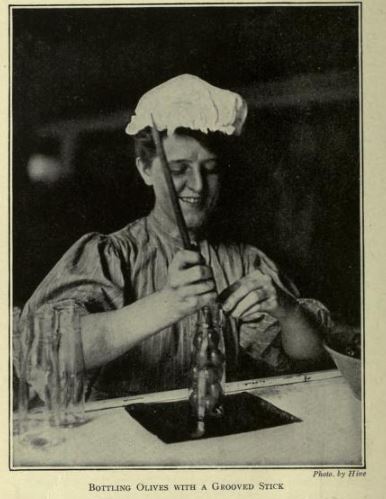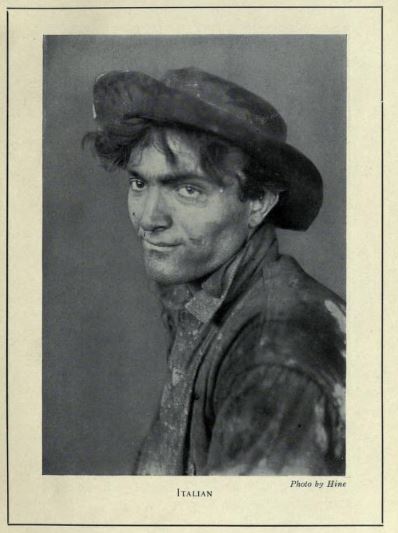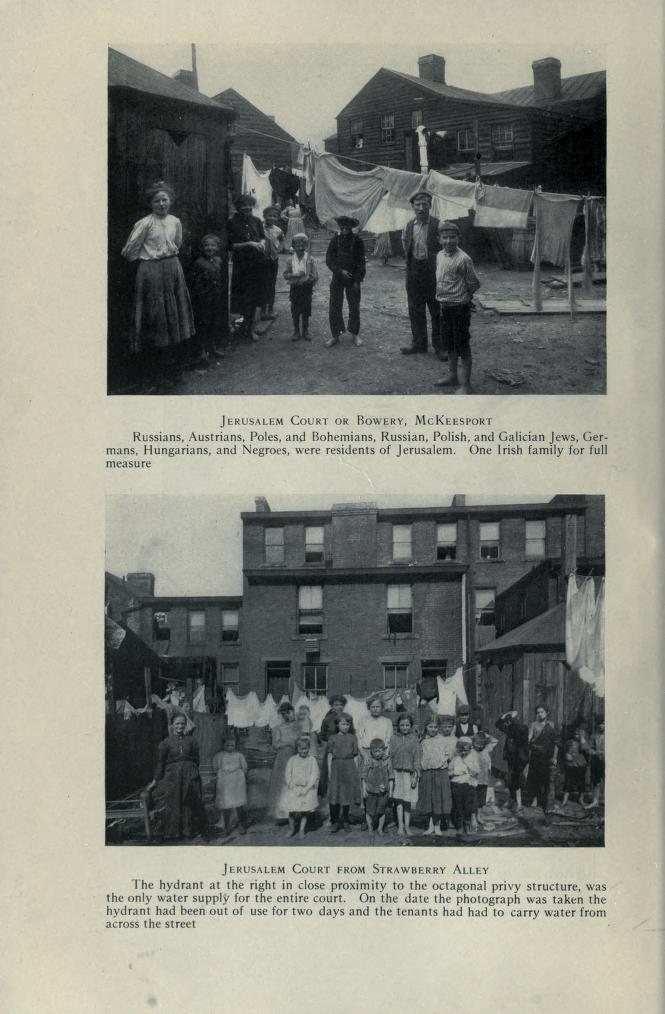Lewis Hine is a photographer who was hired to work for Paul Kellogg for his knowledge of the immigrant settlers coming to the United States at the beginning of 1900. Kellogg and New York Charity Organization intended to conduct a Survey on living conditions and labor of the immigrant workers in Pittsburgh.
The role of Lewis Hine was to spend several months in Pittsburgh taking photographs of the representatives of immigrant laborers with various backgrounds and histories. Hine’s photographs were used to illustrate the volumes of Pittsburgh Survey and present visual demonstration of work and life of immigrant families.
The Importance of Photographs in the Pittsburgh Survey
Five of the six volumes of the Survey are illustrated with pictures of laborers and their workplaces taken by Hine, other visual materials include drawings, maps, plans, and charts. The researchers took a responsible approach towards their work since one of their main goals was to address the popular stereotypes concerning immigrants and newly arriving laborers of that period.
According to the belief of Kellogg, the use of images was a great way to win the sympathy of the American society, especially of its upper class and to stimulate the support for social reform politically. This is why the artists hired to work on the Survey’s pictorial aspect had to be very professional and talented. Hine was chosen to work on the project due to his large experience of photographing the life and labor of immigrants from the Lower East Side of New York City.
Hine’s professionalism was what secured the emotional charge present in the photographs in the Pittsburgh Survey depicting wage earners, most of whom look rather exhausted, their poor neighborhoods, their multicultural communities where everyone has to struggle since early childhood, their very unfavorable working conditions in hazardous areas.
In Kellogg’s Survey, the illustrations appear as the support of the information provided in the research, they are skillfully integrated into the running text which helps the reader to comprehend the Survey and leaves no doubt that what is written in its pages is completely true.
Overall, the Pittsburgh Survey is a massive piece of work created through the collaboration of great researchers, talented artists, and determined social supporters. In the Survey, the wage earners are presented from the dual perspective, they are portrayed as both the victims of the underdeveloped and ungrateful system that exploits them and as dignified hardworking people who deserve better lives.

The first picture I selected to base my paper on is titled “Bottling Olives with a Grooved Stick”. It depicts a woman who clearly is one of the food industry workers. In the photograph, she is sitting at the table with a bowl of olives on her left side and a number of empty glass bottles at her right side. Her job is to put the olives into the bottle with the help of a special stick.
It seems like a very simple task, yet the contemporary readers should not forget that at the beginning of the 1900s the industrialization in the United States was on initial stages and the manufacturing process was not as automated as it became years later. This is why food production was conducted manually regardless of the kind of work: it could be sorting, stacking, packing, washing, wrapping, and dipping among others. The shifts of wage earners of that time were long and with few to no breaks.
Female workers prevailed in the food industry. The Survey states that the majority of women working in food production were from Eastern Europe, namely – Hungary, Poland. Such low-profile jobs were mainly offered to newcomers without experience and paid poorly. The immigrant laborer in the picture has to work long hours; she is exploited because she does not speak English well. All these aspects make her a victim of the labor policies of the 1900s.
At the same time, she is smiling in the photo, like any woman, she wants to turn out beautiful. Yet, her eyes are on her bottle with olives, she does not stop working even while being photographed. She is a dignified person, a loyal and responsible worker, so she deserves better treatment and more respectable living conditions.

The second photograph I chose for this work is called “Italian”. It was taken from the chapter of the Pittsburgh Survey describing the life and labor of steelworkers. Pittsburgh is known for its steel-manufacturing industry, male workers were all the time in demand there. The research conducted by Kellogg notes that among the immigrant laborers involved in the hardest work were those originated from Slavic states such as Serbia, Poland, or Slovakia and men from Italy and Lithuania.
The basis for exploitation of people from these nations was not only based on the fact that they would agree to work for lower wages under the conditions of work scarcity but also because they are especially enduring and non-demanding. Newcomers unaware of standard wages in the United States agreed to work for lower salaries, besides, coming from agricultural countries they were used to working up to 14 hours a day, so ten and twelve-hour shifts were suitable for them.
The Italian wage earner in the photograph clearly was photographed right after work or during work. His clothes and face are dirty, and he looks extremely tired. His facial expression screams about unfair treatment and very hard labor, yet the man is trying to smile for the photographer, which makes the picture even more touching. The man in the image is exhausted, but he will continue working without complaints, as a true dignified man.

The last image was paired with another one in the same page, so since it was impossible to separate them, and because both photographs carry similar messages I will insert the pair. The previous images depicted wage earners at work, whereas these ones show their home – a slum neighborhood where the community of immigrant laborers and their families lives. The images depict women, elderly people, and children in the streets of their poor neighborhood. Many of them have no shoes on, probably because they do not have any.
The district is plain with simple buildings. The notes underneath the photographs emphasize that immigrants from all around the world live in such districts. Demonstrating the unfavorable conditions of living for the people that raise the whole country’s economy is the photographer’s way to show that this must be addressed, they these adults, elderly and children are treated unfairly, that they have to deal with a lot of inconveniences and hazards even though they work harder than anyone.
At the same time, it is impossible to miss the freshly washed clothes and bedcovers handing in the streets behind the immigrants’ backs. This is a sign that regardless of ungrateful living conditions, these people are trying to build comfortable households, they are trying to make the slums their home, clean and warm.
In my opinion, this is the best demonstration of their strength, will-power, hope, and persistence. These people left their homelands in search of a better life and they are trying to work their way towards it even if they have to start from the very bottom.
Conclusion
In conclusion, the contribution of Lewis Hine into the Pittsburgh Survey was vital for the main goal of the authors – the stimulation of political support for the wage earners a large percent of whom were immigrant laborers working hard for the sake of the American economy. Works of Hine demonstrated the sad conditions in which the laborers in Pittsburgh had to live in and also managed to capture the unbendable spirit which helped them to overcome all of the challenges thrown at them in their new homes.
The photographs in the Survey do not require any explanation, just a basic title since they speak for themselves. Each image is a story of one person, and at the same time, it is a reflection of the whole community and the overall situation in the area.
Sharing realistic observations and details for real lives of different laborers Kellogg breaks the social stereotypes about “stupid and submissive” immigrant workers, and Hine captures their faces with eyes full of strength, hope, and sadness as a challenge for the reader, as if saying “here they are, the people who sort and pack your food, who make your clothes, raise the American economy, look at them as say they do not deserve better life”.
Works Cited
“Bottling Olives with a Grooved Stick.” Web.
“Italian.” Web.